Under the guidence of Nick Axel; Merel Boers; Dirk Vis
Key words
Future, scenario, narrative, present, prediction, art, mass culture, science, science fiction, technologies.
Abstract
The temporal perception of existence is one of the most mysterious dimensions. We attempt to measure or arrange it by applying comparative assessments, yet we still struggle to explain how we experience time. Experience belongs to the present – to the exact moment in time at which we encounter the world through our senses. Nevertheless, we do not possess a sense that is specific to time itself, and for that reason we must address it through other events, knowledge or patterns of personal thought.
The concept of future always helped us to navigate through the present, whether it impacts a routine decision of our breakfast menu or a crucial choice. By thinking, planning and dreaming, we bring the future into the present, and the connection between the two creates an almost surreal puzzle. The present obviously influences future, but also what we think of the future defines our present. It seems that if we crack the future before it arrives, we can determine our present and therefore the future.
This labyrinth of thoughts would perfectly make sense if human had precise tools for future prediction, but unfortunately our abilities in this craft are rather poor. Nevertheless, people always had a desire to foresee the future in order to find direction or at least prepare for upcoming developments. Such attempts have even been reasonably accurate on occasion. Still, the general practice is unreliable and confusing overall and is puzzling rather than supportive. Then how can we narrate our personal and collective future under the conditions of uncertainty and anxiety? And how can we engineer our present in order to achieve the desirable future?
To answer these questions, this thesis defines the ‘future’ and explains how we experience the present. It additionally considers several possible future scenarios. The plots are observed from different perspectives, such as science, mass culture and art. These three disciplines help to create a broad overview of prophecies and identify the binding mechanisms between the future and the present.
Ultimately, the amount of realised forecasts is meaningless if we cannot take control of them. Then what’s left for us there? Should we trust the fate and follow our destiny or should we try to gain more control over the powers of nature? Is there a way how we can leave behind all our fears and anxiety and narrate inenarrable?
2
introduction
Being a fourth-year graduate student has prompted me to think extensively about my future. What am I going to do after school? Will I find a job? Will I like it? Am I going to be successful? In which country am I going to live? How will my life look in 10 or 20 years? And what about 100 years? Am I still going to be alive then?
These questions might sound naive and over-exaggerated, but such thoughts have progressed into more global wonder about the future of humanity. Furthermore, they have highlighted that my individual destiny is just one of many; it is a drop in the water of human existence and is highly dependent on the general stream (see Figure 1).
3

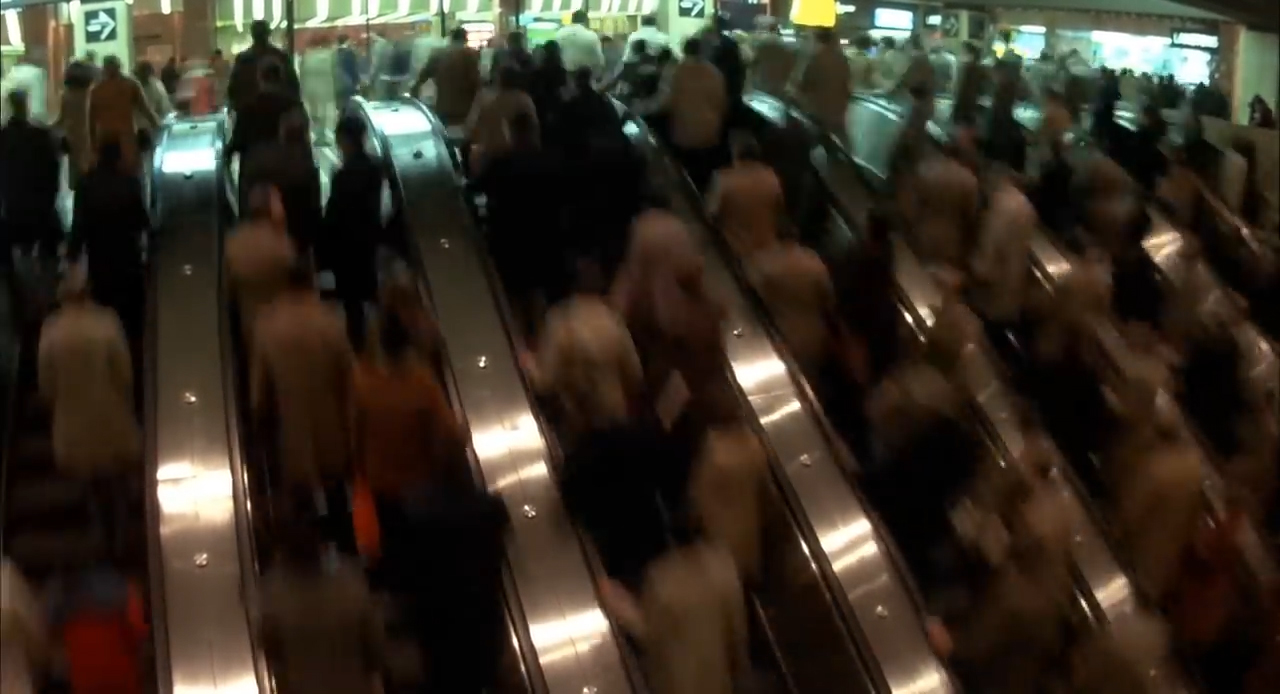

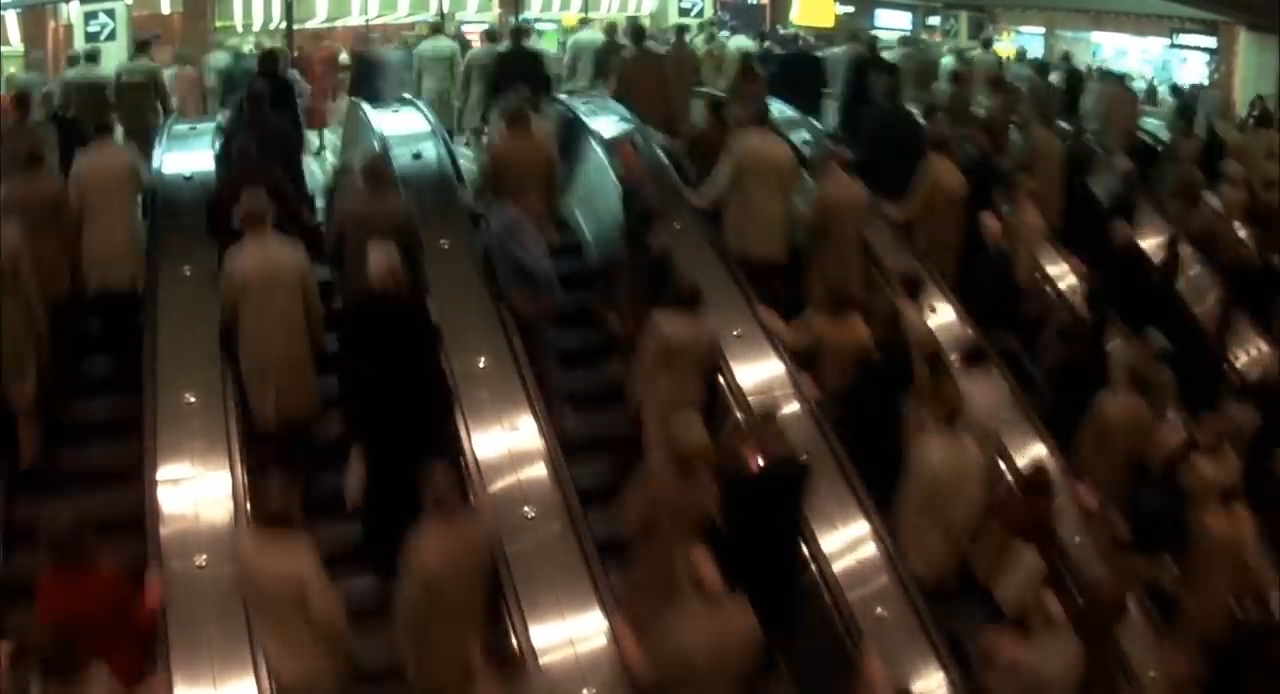
Figure 1.
Screenshots from the cult-favourite movie Koyaanisqatsi which show the flow of the crowd moving on the escalator. The episode depicts humans in a highly abstract way – almost like particles of a greater system.
Koyaanisqatsi (1982); [film] USA: Godfrey Reggio.
However, how do I know if it is a great ocean or a drying brook, or if it is still water or a fast flood?
It seems that it is not only me who is standing at a crossroads; rather, the whole world is about to finally graduate and enter a responsible adult life. But how do we both, me and the world, choose the direction, when there is so much uncertainty and anxiety around? How should we make this brave step, when there are so many fears, which hold us back?
5
Any time my life has been at a crossroads and relied upon a decision I was about to make, my dad would say that I was standing at the 'bifurcation point'. Despite this idiomatic application, the term ‘bifurcation’ relates to mathematics. The associated theory studies changes in the qualitative structure of a given system.1 One can describe the world in a highly abstract and poetic sense as a dynamic system that involves probability algorithms containing different parameters. The value of the parameter at which changes occur is the 'bifurcation value', and the parameter that is varied is known as the 'bifurcation parameter'. The bifurcation occurs when a small, smooth change in the parameter values of a system causes a sudden 'qualitative’ or topological change in its behaviour.2 On this basis, the sequential model of the world would resemble a branched structure with a growing amount of probabilities (Figure 2).
6

Figure 2.
Bifurcation Diagram; the illustration of chaos theory: dependence on parameter R (continued).
Image taken from 'The World Is Mysterious' blog and generated on MATLAB. https://theworldismysterious.files.wordpress.com
/2013/09/3f0075d9d6cf3290f36ef8b21bdea0bb-eps.jpg
However, when speaking of the future, one uses language constructions such as 'there will be’, ‘we are going to’ and ‘you are about to'. These differ in various languages, but the vast majority of Western systems share the same logic, whereby the 'future' tense refers to a moment that is 'later than now' while also expressing our attitude towards the upcoming event. There are multiple approaches to time theory which describe time as a spiral, spacial or even imaginary system. For instance, the famous idealist metaphysician J.M.E. McTaggart has argued that time is in fact not a reality and the appearance of a temporal order to the world is a mere illusion.3 We might also say that time was the future at some moment in the past and will be the past at some moment in the future. Nevertheless, based on our usage of language, which is an essential part of our consciousness, we clearly perceive time as a linear system. So, the most natural representation of time for us is a single, straight, non-branching and continuous line that extends, without end, in each of its two directions.4
That situates us in a highly puzzling state wherein we must contend with two contradicting logics. On the one hand, we are accustomed to envisioning time as a line where the future is a stable quantity; on the other hand, it appears in a countless amount of probabilities. This inner conflict causes distractions, anxiety and even fear. How can we imagine, plan and narrate our lives if we have only an unknown set of parameters in our hands? 'For many practical purposes, it may not matter much whether the current state of the world has already occurred an infinite number of times, or whether an infinite number of states have previously occurred each of which is merely imperceptibly different from the present state’.5 However, with regard to the future, humanity has exhibited an intense interest in knowing which of the infinite possibilities will emerge. This might seem to be a highly abstract and theoretical question, but it indeed has a distinctly practical application.
7
'The future and past states of many physical, chemical, biological, ecological, economical and even social systems can be predicted to a certain extent by knowing their present state and
the laws governing their evolution’.6
Ultimately, though, how much we know about the future is less important than how we utilise this knowledge. Do we believe the prophecies and live accordingly or we completely ignore them? We may attempt to prepare for upcoming events or simply allow fortune to decide our destiny.
In fact, our perceptions of the future are most significant for the present and define our thoughts, feelings and actions at a particular moment as well as our dreams and ambitions. Even if we are never able to foretell our destiny, it is important to be aware of how our expectations of it can influence us.
8
technologies
Every time we think of the future, one way or another we return to the question of technologies. In this specific case, ‘technologies’ refers to an abstract collection of all kinds of non-human or non-organic devices or programmes that are designed to improve or advance human existence. It is unsurprising that technologies are at the centre of our attention given that ‘[o]ur lives are stored in bits in computational memory',7 and the field of their dominance is constantly expanding. The modern world is dependent on technologies; machines perform not only difficult or unwanted tasks but also those which humans are wholly unable to achieve (Figure 3). Yet, society frequently takes technologies for granted in daily life. We can speak on smartphones and turn on washing machines and, a minute later, join a web chat, watch an online movie or check for updates on social media. All of these actions seem to be useful, familiar and comforting.
9


Figure 3. The da Vinci® Robotic Surgical System enables surgeons to perform operations through a few small incisions and has several key features, including the following: a magnified vision system that provides surgeons with a three-dimensional, high-definition view inside the patient’s body; an ergonomically designed console where the surgeon sits while operating; a patient-side cart where the patient is positioned during surgery; and wrist instruments that bend and rotate to far greater degrees than the human hand. http://www.davincisurgery.com/da-vinci-surgery/da-vinci-surgical-system/
However, once we begin to consider the future of technologies, dozens of questions and doubts suddenly emerge. On the one hand, high-tech inventions foster curiosity and excitement; we carefully observe a new wonder to determine how it works and how it can benefit us. Still, there is always another side of the success. People might start to question if a new device could carry any hidden danger. We become suspicious, worried and even frightened of innovation. But is it a simple fear of changes or a reasonable concerns about the possible consequences? The fear of technological development is quite intriguing. While we desire to possess and use technologies for our own benefit, we are simultaneously horrified by their potential influence on our lives (Figure 4) despite being in control of their rise, expansion and consumption.
11

Figure 4. The widely discussed Large Hadron Collider resonated heavily in public discourse and raised many questions about the reasonability of experiments with uncertain consequences. The image depicts the CMS detector on the Large Hadron Collider at CERN (photo by CERN). http://news.fnal.gov/wp-content/uploads/2015/10/cms-detector-cern.jpg
It is fair to say that humans have become much more receptive to innovations compared to in the past, as we can now adapt more easily to new devices and are more open to ideas and concepts. In the 15th through 18th centuries, progress had to carve its way through human prejudices and superstitions and was often confused with magic or even evil spirits. The story of Giordano Bruno offers one example (Figure 5). Bruno was a Dominican monk who was executed by the Catholic Church for his ambitious views. His ideas particularly originated from science and philosophy and contradicted the word of the Bible. The best-known cause of his prosecution was an attempt by the church to stop the spread of Copernicus's vision of the universe; however, according to the inquisitorial documentation, Bruno also preached neo-Platonism, Pythagoreanism and geometrical philosophy. He was one of the great figures of early modern Europe and was considered to be a heretic only because his beliefs did not adhere to the church doctrine.8 Comparing to that, nowadays the progress seems to ride hell for leather without any difficulties. Still, examples from mass culture – and especially science-fiction books or movies – are full of terrifying predictions and dystopian scenarios for our future.
12

Figure 5 The portrait of Giordano Bruno, a copy of the XVIII century engraving (1830). http://arzamas.academy/mag/164-bruno
Mass culture has long served as a mirror of society, and analysing the stories which are told through it can highlight many dilemmas that have preoccupied humans. Generally speaking, it is noticeable that our dreams and visions of the future have become more pessimistic – often specifically in relation to technologies (Figure 6). What evokes this fear and arouses deep concern in us? Throughout the last century, humanity has learned how to solve many issues, including natural disasters, epidemics and political circuses.9 However, this does not mean that we have eliminated those issues; rather, we have learned to assume responsibility for them and collectively seek solutions. So, from a biological point of view, people are not as easily scared anymore. Why, then, are we paralysed by a fear of technologies, which at the end of the day are our darlings?
13
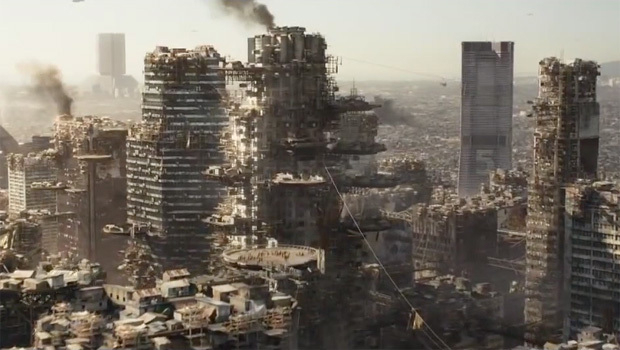
Figure 6. The depiction of post-apocalyptic Earth in the movie Elysium, which is destroyed not by a war or earthquake or zombies. It turned into a hell where people lived in rubble by the overconsumption and irresponsible attitude towards environment, which caused damage for the majority of the planet and her inhabitants. Elysium (2013). [film] USA: Neill Blomkamp.
One answer to that question is that it is significantly challenging to predict the direction of progress and the future consequences of a particular decision. In fact, it has become almost impossible to anticipate the state of the world in 50 or 100 years. It is fair to say that this challenge also applied to people in the past. So, what is the difference, then?
There are several factors which are specifically indicative of our time. The first is the tale that we can actually predict the future. It might sound speculative, but a substantial part of industries is founded on this tale. We believe that we can predict financial crises or climate change, and there are people whose occupations revolve around making such estimations. We build roads under the assumption that we know how the city will grow or invest money in research and guess that it will pay off in several years. We spend a vast majority of our lives thinking of preventive actions for events that might never take place. Another significant condition is globalisation. The knowledge that events in one part of the world might pose unexpected consequences for another part of the world highlights the immense responsibility of humanity. Unlike before, even local decisions now demand a careful investigation of their consequences not only for the specific region but also for the rest of the world. The last condition, but not least, is the speed of the progress. Many people believe that we are at the cusp of drastic changes and that the developments of the next 100 years will be incompatible with those of previous centuries. In the last few decades, we have undoubtedly achieved many transformations, and even though the quality of these changes has been subject to debate, society has still maintained a feeling of rapid advancement.
Taking the above insights into account, our worries about the future are understandable given that we are responsible for so many of its aspects. It is important to determine how to proceed without doubts or anxiety, how to efficiently narrate our future and which actions we can take today to avoid waking up in the world we never asked for.
14
future
To continue the investigation, it is necessary to define the ‘future’. Of course, the most obvious answer would refer to the moment following the present moment, which leads to the temporal perception of the future. We can also conceptualise it from a spatial point of view as places that we have not yet discovered or created. For the current discussion, however, the most relevant perspective of the future is mythological in nature. Unlike the previous two points of view, the mythological perspective describes the future not as a linear system but as a cultural phenomenon:
'Future is not a natural dimension of the mind, rather it is a modality of perception and imagination'.10
In this sense, ‘future’ entails not only progress, development and growth but also the achievement of an ultimate goal.
Most modern political theories, such as liberalism, social democracy, nationalism and communism, have the same foundation: the imperfection of the present and the brightness of the future (Figure 7). These ideas originated from the 20th century, which was famous for its futuristic myths as well as their stunning failures. Such political systems are based on solid philosophical backgrounds that also address the areas of social, cultural and personal life. The commonality among them is the promise of a utopia that can be reached through various methodologies and chains of actions.
15

Figure 7. The amazing slides from the Soviet Union period showing how Moscow might have looked in 2017. The short slide movie tells the idealistic story of enormous technological achievements which would tangibly change the order of life. The slide depicts children in 2017, who are viewing a projection of an immaculate city with blanket-white buildings and roads. The full story can be accessed at http://www.dailymail.co.uk/news/article-4087422/Cities-ice-westerners-banished-desert-island-Communist-utopia-Amazing-1960S-propaganda-images-Soviet-Union-thought-world-look-2017-centenary-1917-Bolshevik-Revolution.html
The future has played an important role in the formation of ideologies, and this is evident in several fundamental concepts, such as 'the Hegelo-Marxist mythology of Aufhebung and instauration of the new totality of Communism; the bourgeois mythology of a linear development of welfare and democracy; the technocratic mythology of the all encompassing power of scientific knowledge, and so on’.11 The idea of rapid progress that aims for ultimate perfection is not natural; rather, it partly derives from the capitalist governing system and its constant expansion of the economy, knowledge, and the role of production and profit.
The cultural domain of the 20th century centred heavily on futurism, which posited that technological developments would result in an entirely new world and would reconstruct human consciousness. Futurists celebrated industrialisation and the arrival of the Machine Age, and they found inspiration in productivity, speed, repetitive motion and automatisation. As a movement, futurism is considered not only radical but also highly political (Figure 8). It notably yielded new aesthetics in art as well as the language of commercial advertisement and political propaganda. However, both of the most significant pioneers of futurism, namely Italy and Russia, were never destined to meet their utopias. Italian futurism was ruined by the reality of nationalism and fascism, and Russian futurism encountered the totalitarian violence of the Soviet period.
17

Figure 8. Marinetti, Filippo Tommaso. 1914. The Riot in Milan. [Ink, cut-and-pasted paper, and crayon on paper] Artists Rights Society (ARS), New York / SIAE, Rome
The next attempt to build a utopia occurred at the end of the century along with the expansion of cyberculture and a belief in the digital revolution. Cyberculture proposed a common global mindset which embraces the entire human consciousness, liberates us from bodily limitations and opens endless horizons of virtual space (Figure 9). However, this concept quickly faced a multitude of moral issues related to privacy, misuse of information and massive manipulation, and it finally failed in the conflict between 'virtual life and actual death, of virtual knowledge and actual war'.12
18

Figure 9. The DEAF96 exhibition (1996) presented the theme of ‘Digital Territories’, which encompasses digital society and the influence of electronic networks on our perception of the environment, our idea of self and our social conduct. http://v2.nl/events/deaf96-exhibition
Evidently, for a vast span of time, the future was an almost religious belief that was expected to fulfil present expectations. However, most hopes were never realised (Figure 10). Thus, humanity learned its lesson and became suspicious towards any ideology as well as towards the future itself. We no longer expect the future to be bright or fulfil its promises; the utopian imagination has slowly become outdated and replaced by a dystopian one.
19


Figure 10. Examples of abandoned futuristic monuments, which symbolise the end of a period of great expectations and hopes. The lonely giant, which once represented the brightness of the future, now arouses only sadness and nostalgia for dreams which never came true. On the left is an example of Yugoslavian monument built in the 1960s and 1970s (photograph by Jan Kempenaers). On the right, the head of the monumental sculpture Rodina-Mat Zovet (1959-1967) ('The Mother-Native Land is Calling') is stored on the outskirts of Moscow.
Apocalyptic themes are not unusual nowadays and are clearly reflected in books, movies and artwork. Franco Berardi has stated that
'[t]he future was on the side of the revolution. It was a great and empowering myth, but few believe
it any longer: the future is over’.13
This statement concludes that the future is just another failed ideology that has come to its end, which prompts a key question: where are we heading now, then? One might wonder how the future can be over when we are constantly present there in our minds. We think about working to earn money for lunch or holidays, visiting the doctor to prevent potential health issues or saving electricity to protect the environment for the next generations. Even though we no longer idolise progress, we appreciate improvements and wish to predict which developments can bring them to us.
20
The myth of the future has been replaced by the future methodology. This change might not seem so dramatic initially, but it has significantly shaped our perceptions of the world. The future methodology is a tool not of dreamers but of strategists. Nowadays, the question is rarely how we want to see our future but rather how we can guess it and prepare for the unknown but inevitable (Figure 11). Melinda Cooper has stated that 'scenario planning is designed to foster decision-making under conditions of uncertainty. Its focus is not risk as such, but rather the radical uncertainty of unknowable contingencies'.14
21

Figure 11. A still image from the television series Doctor Who depicts a folder with emergency protocols to be applied in the event of unexpected disaster. In this series, it is an alien invasion. Doctor Who (since 2005); [television series] Great Britain: Graeme Harper, Euros Lyn, Douglas Mackinnon and others.
We desire a realistic vision of the future in order to make reasonable decisions and decrease risks. Today, we even have professional prophets who try to analyse, calculate and speculate on the future. The desire is relevant not only for our personal lives or nearest perspective but also for the remote global future. We wonder if life on Earth will survive, if we will invade space, if human biology will remain the same or our bodies will suffer dramatic changes, and whether artificial intelligence will surpass biological intelligence. However, the power of this desire does not guarantee the ability to predict such developments. The scenario-planning business has been notably unreliable so far, and it has yielded confusion and uncertainty rather than a stable foundation for the future.
One might argue that we do not need a precise future scenario in order to plan our lives. Instead, it is sufficient to have a sense of direction and knowledge of basic actions and possible dangers. But who dares to make such assumptions or guarantees?
22
predictions: science,
mass culture, art
'Whether one predicts rainfall, recessions, or racetrack winners, predicting an event or state of affairs often, perhaps even typically, involves saying that it will happen before it
occurs, and this common association is presumably
responsible for the idea that predictions must be about the future.'15
Predictions have clearly had a long and significant role in the political and cultural life of society. The case of the Greek Oracle at Delphi (Figure 12) evidences that people have consulted supernatural powers in an attempt to foresee their future since ancient times. 'Generals sought the oracle's advice on strategy. Colonists asked for guidance before they set sail for Italy, Spain and Africa. Private citizens inquired about health problems and investments’.16 Another famous example is the 14th-century astrologist, doctorate in medicine, alchemist and foreteller Michel de Nostredame, also known as Nostradamus. Similarly to many other prophets, he engaged with the governing structure and worked at the court of Charles IX, the monarch of the House of Valois and the King of France from 1560 until 1574. Nostradamus is most famous for his book Les Propheties (Figure 12), which contains his long-term divinations. In the preface to the book, he wrote, 'I have composed books of prophecies, each containing one hundred astronomical quatrains, which I want to condense somewhat obscurely. The work comprises prophecies from today to the year 3797’.17
23

Figure 12.
An image of the Oracle at Delphi created by U.S. painter and illustrator J. Augustus Knapp (1853-1938).
The book Les Propheties de M. Michel Nostradamus, Reveues & corrigees sur la coppe Imprimee a Lyon par Benoist Rigaud (1568) from Mario Gregorio's library.

Nowadays, we deeply doubt the accuracy of such compositions, and we may even consider them to be complete nonsense. Instead, we consult theorists, scientists, journalists and economists. This approach seems reasonable and reliable, but it is interesting to consider the essential difference between these sources and the Greek Oracle or the poems of Nostradamus. The methodology of forecasting still poses significant challenges and often leads to confusion and misguidance. From an objective point of view, we simply do not have prediction tools that have been proven to be successful, and any attempts to develop such tools have ended with sufficient probability counter in the best case. Of course, these methodologies are far more advanced than the ‘coffee cup reading’, as they use collected data and propose different levels of expectations. Nevertheless, the whole field remains rather speculative. After all, any prediction of someone’s death will come true eventually.
It is fair to say that predictions do not aim to precisely describe upcoming events in many cases. Rather, they offer a possible perspective and highlight warning signs in the present. By making those warnings explicit and over-exaggerated and suggesting them to a wide audience for their judgment and analysis, we can examine the future more critically and relate it to our current decisions. However, this does not reduce the significance of our preventive attitude towards the future. We still put all our powers and silks to foresee it and hope that critical examination and awareness can prepare us for possible scenarios.
The character of predictions is highly dependent on the activity of foreteller, who might come from a scientific, cultural and even artistic field. Scientific predictions often speculate on collected data, which Eric Drexler (1992) has named 'theoretical applied science'. 'Theoretical applied science studies the properties of possible physical systems, including ones that cannot yet be built, using methods such as computer simulation and derivation from established physical laws’.18 Another way to reliably address the future relates to both philosophical and sociological sciences. Scholars have attempted to systematically structure our expectations of the future, analyse the probability of events and count consequences. Nick Bostrom, a professor of Oxford University, has published one indicative example of such analysis in the paper 'The Future of Humanity'.19 Among the topics in this work are four future scenarios that loosely cover most conceivable possibilities.
25
In the cultural domain, the role of foreteller is almost completely dominated by science fiction, which addresses our fears and desires. It is a broad genre encompassing several directions, but it possesses a distinct, recognisable futuristic trend. There are many popular pieces which take the viewer on an entertaining journey across the future, such as Metropolis (1927), Star Trek (since 1966), A Space Odyssey (1968), Blade Runner (1982 and 2017), The Terminator (1984), The Fifth Element (1997), Minority Report (2002), I, Robot (2004), Oblivion (2013) and Interstellar (2014), which were definite bestsellers of their time.
It is hard to understate the importance of science fiction for the futuristic narrative. It provides an opportunity to raise controversial and ultimately unanswerable questions. It is also a great tool for scenario-making that gives the necessary freedom of imagination. The prediction craft requires not only drafting upcoming events but also assessment of the possible moral dilemmas that might result from them. Science fiction has dominated this field by integrating those issues into the fantasy plot and simplifying the ‘puzzle’ for the wide audience. Of course, it is not a universal solution, and it does not resolve the problems, but it facilitates more participation in the discussion.
26
Even though the warning role of science fiction is truly significant, there is another perspective to it, which is evident in the following statement by the famous U.S. writer and Professor of Biochemistry at Boston University, Isaac Asimov:
'For the first time, science-fiction writers appeared to the world in general to be something more than a bunch of nuts; we were suddenly Cassandras whom the world ought to have believed. But I tell you, I would far rather have lived and died a nut in the eyes of the world than to have been salvaged into respectability at the price of nuclear war hanging like a sword of Damocles over the world forever’.20
Claire P Curtis has offered an insightful summary of the meaning of science fiction for modern society:
'The fiction of Science fiction is primarily a fiction concerning how we get from one point to another. The description of a place, the prescription for how to live, is the contextually rich thought experiment that we need in order to think about where and who we want to be’.21
Art has a specific role in future predictions. Compared to science, art is less concerned with facts, yet it is not as speculative as mass culture. Although it varies by genre, art generally tends to use an intuitive and poetic approach to address a question. If we were to designate areas of responsibility, science would represent materiality, science fiction would correspond to ethics and the role of art could perhaps be spiritual. It is as though artists have some sort of antennae that can detect change, and often before anyone else. Above all, artistic practice carefully challenges the assumption that the future is formed by the present, and not only by its reality but also by fantasies and dreams.
28
It is debatable that our imagination directs the future, but the majority of art consciously or unconsciously supports that claim. Simply stated, if there is no human on Earth who desires war, then there is a high probability that there will be no war. However, it is difficult to define how much influence we have over global events and issues that are ultimately out of our control. Art considers this from the metaphysical perspective, which extends beyond the physics. Metaphysics derives from Ancient Greek philosophy, which for a long period of time was labeled as speculative and unreliable. However, the term became more popular and is now widely used in several fields.
Initially, metaphysics concerned basic questions of existence, such as the interrelation of the body, mind and universe, or 'first causes and principles of things'. The 'New Metaphysics' state that 'consciousness is the faculty which perceives and identifies things that exist’.22 It questions if causal relations are objective and permanent features of reality and argues that our perceptions of them are nothing more than observations of the 'constant conjunction' to which we are accustomed. The relevance of art for this theory is evident in the goal of modern art: to offer a different perspective of 'the principle of things' and question current causal relations.
29
four future
scenarios
Nick Bostrom has proposed four future scenarios that offer a broad overview of humanity’s chances for survival and advancement. To structure the analysis, he has designated these sketches as ‘extinction’, ‘recurrent collapse’, ‘plateau stasis’ and ‘post-humanity’. The following four directions encompass all possibilities for the future and can accordingly structure our expectations.
30
extinction—>
recurrent collapse—>
plateau stasis—>
post-humanity—>
Extinction is the first and most conclusive storyline. It offers clear expectations of the end result, whereas the other three scenarios may lead to an indefinite condition of human history. It is reasonable to expect that humanity will not last forever considering that approximately 99.9% of species to ever exist have disappeared from the face of the Earth.
32/Extinction—›
Recurrent collapse is a slightly more positive perspective for humanity compared to extinction, as it offers a potential for recovery even after a global failure. Any sort of non-existential disaster that causes a breakdown of civilisation but leaves a chance for survival can serve as an example. The list is quite long: climate change, population growth, pollution and nuclear waste issues, or natural resource exhaustion might devastate human civilisation. However, the vast majority of such issues are environmental in nature and are unlikely to cause a collapse in one day. This is good news because it gives us an opportunity to develop solutions and prevent a tragic outcome.
32/Recurrent collapse—›
Another curious alternative plot that Nick Bostrom has proposed is a plateau stasis. In this scenario, humanity reaches the ceiling of its cultural, social and political evolution, thereby precluding any more major changes. Bostrom has assigned a low probability to the stasis view, as it would imply that our society has reached or will soon achieve its final state. This seems unlikely in view of various technological innovations that can tangibly change our environment and give humanity important new capabilities.
32/Plateau stasis—›
Post-humanity is the most positive and reachable scenario under investigation. It seems to be not only highly probable but also awaited by a broad range of foretellers. The idea of us evolving into a new species is widely discussed nowadays and appears to be not just acceptable but even desirable. Compared with the other scenarios, this course of events is the most promising for humanity. We obviously do not want to suffer or become extinct from a great disaster, but we also do not want to become stuck in our current state as well. The post-human scenario is also one of the most unclear. It gives us hope for survival and even prosperity. The task is to determine how to accomplish this success and the appearance of the new quality.
32/Post-humanity—›
With regard to extinction, Bostrom has described two distinct possibilities for humanity. The first is more optimistic and proposes that evolution may allow us to transform into a new species or entity beyond Homo sapiens, which leads us to the post-human course of events. The other predicts complete extinction, whereby humans will simply die out without any chance for recovery. Nick Bostrom has expressed a positive outlook for the future, suggesting a 25% probability that humanity will eventually face some sort of existential disaster. To compare with his colleagues from the predictive field, John Leslie proposed a figure of 30% in End of the World, and Sir Martin Rees estimated 50% in Our Final Hour.23
33/Extinction—›
Luckily, all those issues are now widely discussed, and people are increasingly informed and aware of the concerns. At the same time, most causes of environmental matters originate from daily life and ignorance of the effects of our actions. Lieselot Bisschop, an Assistant Professor of Erasmus University in Rotterdam, has expressed a need for more progress in terms of preventive as well as resolving regulations. In her paper on environmental crimes, she has specifically referred to so-called 'crimes of omission', which are crimes that do not require specific punitive actions. 'They are violations exactly because nothing was done to be in line with the regulatory requirements’,26 - she explains.
33/Recurrent collapse—›
In general, stasis has a negative connotation in human perception. The circle of our life is a constant change: we are born, we age and we learn how to speak and walk. Each of those processes requires constant development but also a natural decline at the end. In a way, this cycle has a core meaning for the idea of humanity as such, and the stasis plot violates its very basis. It robs humans of their main desire to improve themselves and therefore feels particularly disappointing. Our beliefs and mindset as well as daily life activities are based on that change and improvement. Eliminating this part of our consciousness might cause a lack of motivation and even degradation once we realise that the surroundings will remain the same regardless of our actions.
33/Plateau stasis—›
'Population greater than 1 trillion persons. Life expectancy greater than 500 years. Large fraction of the population has cognitive capacities more than two standard deviations above the current human maximum. Near-complete control over the sensory input, for the majority of people for most of the time. Human psychological suffering becoming rare occurrence.'37 Each of these possibilities excites us, but it also causes substantial fear. They suggest significant changes in human nature itself, and no one is certain if we will like those changes.
33/Post-humanity—›
Writers and filmmakers have also held off on killing the whole population of the Earth. Despite the popularity of apocalyptic plots among creators, only a few movies have ended with the complete elimination of humanity. A recent film on this topic is Melancholia (2011), directed by Lars von Trier, which gracefully depicts the personal stories of several people against the background of the Earth’s collapse. Every moment of the movie is saturated with the common knowledge that the Earth will imminently collide with an enormous planet named 'Melancholia' and there is no chance for survival (Figure 13). The subject of the movie is not specifically humanity’s survival, and Lars von Trier avoids common science fiction clichés, such as the television news rush, cabinet meetings or surging mobs in the streets. The blue planet, Melancholia, is simply a metaphor for depression, which literally crushes the main characters. However, it also applies in reverse, transforming the end of the world into a highly personal, almost intimate drama.
34/Extinction—›
As with any other cultural phenomenon, science fiction reflects the time in which it was created rather than predicting the future. For instance, in the 1950s, Americans were preoccupied with the aftermath of the first use of the atomic bomb against a civilian population. In The Martian Chronicles, a popular collection of stories by Ray Bradbury, human colonists on Mars are shocked when their planet Earth is destroyed by atomic incineration (Figure 17). The imagination of writers reflects our current desires and fears, which makes the story even more worrying in view of the dystopian mood of many recent products. It raises many questions about the emotional state of our society. Why are we so pessimistic? What causes the fear and anxiety, and how can we address it?
34/Recurrent collapse—›
This threat gives enough cause to beware of plateau stasis even before mentioning that humanity will become deadly bored if there is no need for growth. 'We can readily imagine a being, possessing sufficient knowledge and ability, to calculate the orbits of every person now living. Such a being must know all that is to be known in regard to our mental and physical organisms, and the circumstances under which we are and will he placed. Having thus the initial stage and being able to trace succeeding events as logical sequences of the present, such a being could predict exactly what each of us will decide to do, under the present and all succeeding circumstances-could predict how far we will be physically and mentally able to carry our resolutions into effect. But how awful must be the mind which could perform such a task!'31
34/Plateau stasis—›
It is a tricky question, and it changes its meaning according to how it is posed. Answers to the same question from our current view or a post-human perspective can differ immensely. If, theoretically, the human era is over and we have reached our new state, it is unlikely that such change has occurred in one day; thus, we will have had a chance to grow accustomed to it and situate ourselves in a new world and new order. Imagine then that there is a human – our ancestor – who is traveling through time to explore the future. That person would be stunned by his or her observations and would struggle to understand the new reality and how it has emerged.
34/Post-humanity—›
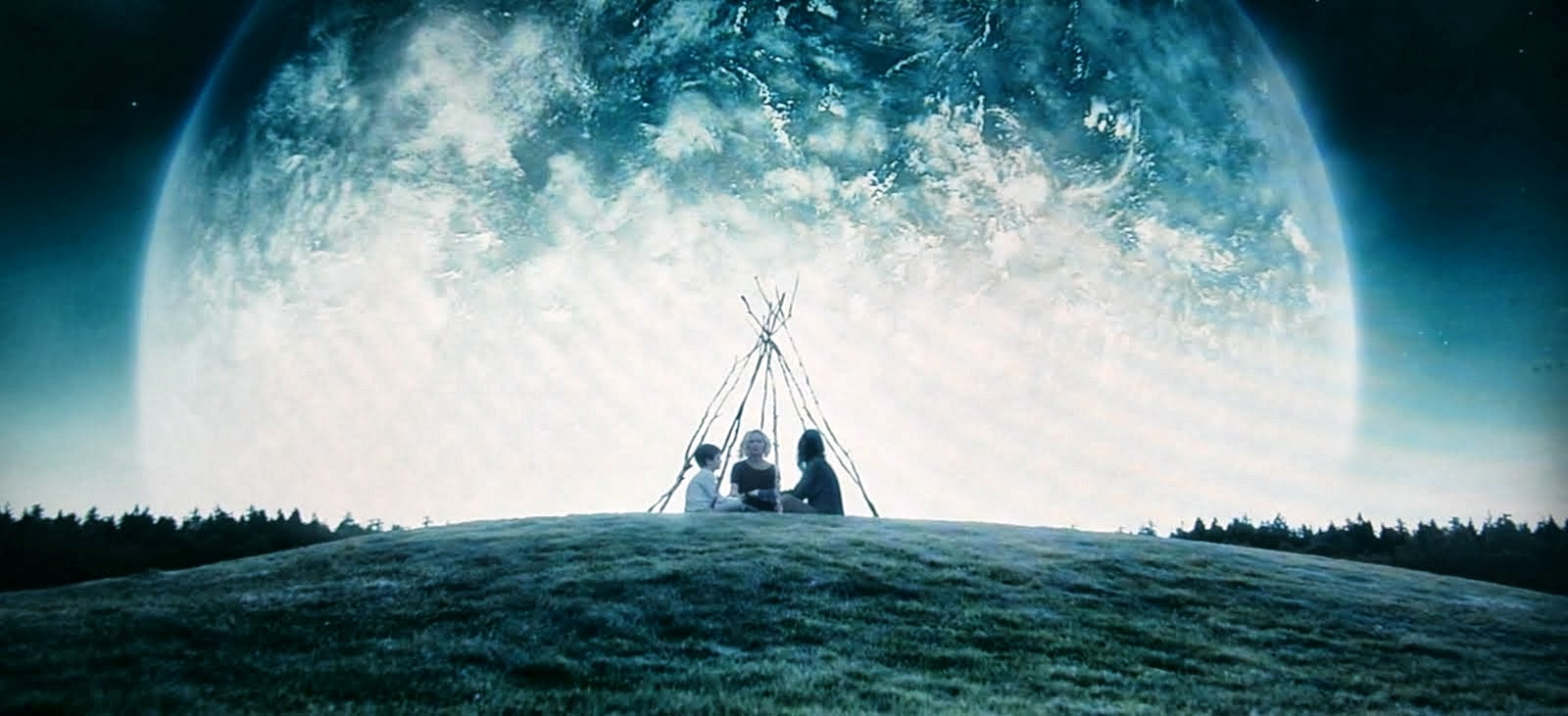
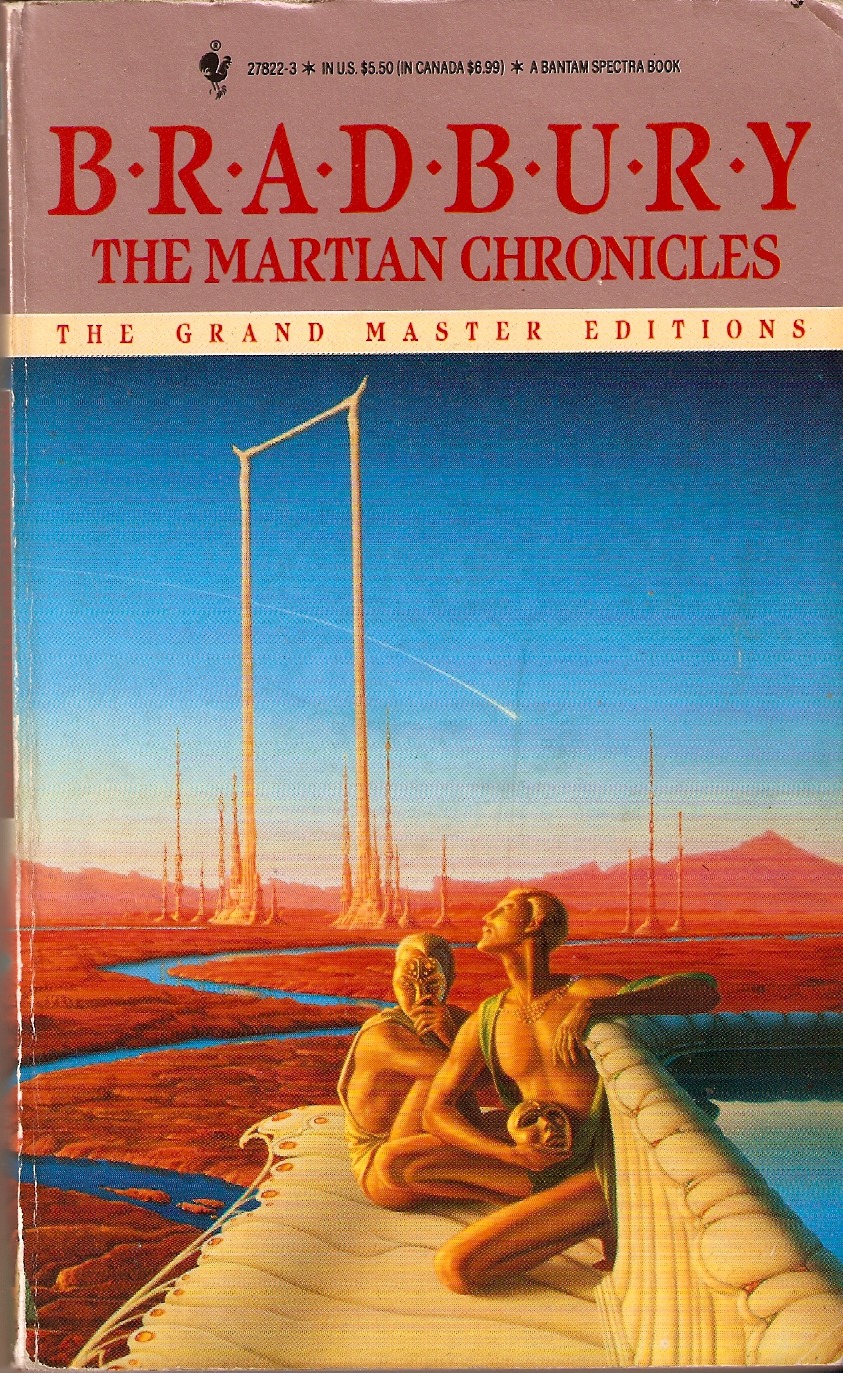
Figure 13. A still image from the final scene of Melancholia, when the gigantic planet crushes the Earth and the main characters along with it. Melancholia (2011); [movie] France, Denmark, Sweden, Germany: Lars von Trier.
Figure 17. The cover of the book illustrates the very moment at which human colonists on Mars witness the destruction of their home planet. Bradbury, Ray. 1950. The Martian Chronicles. USA: Spectra; Grand Master Edition Mass Market Paperback – 1985.
A year after Melancholia, another apocalyptic movie was released with the playful title Seeking a Friend for the End of the World (2012). This directorial debut from Lorene Scafaria narrates the final days on the Earth, which will soon explode from a collision with a gigantic asteroid. It would be the most unoriginal disaster movie if it did not have all the necessary attributes of a romantic comedy: it is sweet, the main characters are attractive and charming and it is trite, yet it leaves viewers thinking that this is the apocalypse they would like to have (Figure 14). Despite strong critical feedback, the film bravely concluded a love story with a universal disaster. A notable remark was that the movie did not fully exploit the apocalyptic circumstances. However, it is hard to imagine a closer neighbourhood between tender and tragic. It would feel like a bad joke which one makes to alleviate a situation but which only compounds the tension.
36/Extinction—›
The post-apocalyptic theme is a favourite within science fiction, and the variety of examples ranges from cheap television novels to true masterpieces. The most indicative works of the genre, such as Mad Max (1979) and its sequels, Waterworld (1995) and The Book of Eli (2009), present the same kind of story. They depict the Earth after some sort of disaster as well as the minority of people who have survived and must fight for their lives. Such movies depict humans as barbarised, violent creatures who have lost hope along with their moral compass (Figure 18). Of course, there is one hero who realises the dire state of society and tries to guide it in the right direction, but it is rather a tribute to the genre than a conscious statement.
36/Recurrent collapse—›
Maybe it is a matter of limited imagination, but mass culture has mostly represented plateau stasis in dystopian examples. In most cases, such plots depict a government assuming totalitarian control over civilians by forcing power and technologies onto them. The idealistic goal of such regime is protection, order and prevention of conflict, but in practise, it results in extreme restriction of liberty and suppression of individuality.
36/Plateau stasis—›
A dilemma of post-humanity and our attitude towards it is the uncertainty over how to plan, imagine or predict a twist of fate. Is it fair to apply our current values and moral judgments? Or we should take into considerations that they might be outdated by then? Nick Bostrom has said, 'An artificial intelligence can be far less human-like in its motivations than a space alien’.38 But what about the post-human? If we in the present do not like us in the future, does that mean we should not proceed towards that state?
36/Post-humanity—›

Figure 14. A still image from the final scene of Seeking a Friend for the End of the World, in which the main characters share their feelings about the end of the world and each other. This intimate fragment concludes with a white flash of light that consumes the entire space and marks the end of the world. Seeking a Friend for the End of the World (2012); [movie] USA: Lorene Scafaria.

Figure 18. An image of crazy, violent bikers who are hunting a young police officer, Max, and seeking revenge for the death of a member of their community. Mad Max (1979); [movie] Australia: George Miller.
Bostrom has noted a significantly high probability that humans themselves will cause the existential disaster. While we cannot completely ignore possible natural causes, history does evidence that humanity has thus far managed sufficiently with ecological cataclysms. Still, 'human civilization is introducing many novel phenomena into the world, ranging from nuclear weapons to designed pathogens to high-energy particle colliders',24which may pose greater threats than the environment ever has. Technological development has also traditionally been deemed a threat to our safety. However, this concern is not so much about the machines themselves, as artificial intelligence does not yet have a consciousness that is advanced enough to cause danger. Nevertheless, there is always the risk of people misusing technology for selfish purposes, which might lead to a dramatic outcome. It is uncertain whether super-intelligent machines will be built and if they will determine the destiny of our species, but considering the daily growth of new technologies, this existential risk may have heightened as well and still remains to be discovered.
38/Extinction—›
The Last Battle (1983), the debut feature film of the famous French director Luc Besson, appears more realistic and focuses more closely on human behaviour patterns. The combination of vivid black and white shots, the absence of voices apart from two words of dialogue, the abstract environment and the dramatic sound effects create a remarkable atmosphere that truly supports the subject of movie. In a way, the movie is highly symbolic and clearly opposes good and evil as well as order and chaos, and this resistance can persist forever (Figure 19). Luc Besson does not use verbal language to tell the story, which makes it calm, thoughtful, focused and touching. The movie depicts a post-apocalyptic world in a highly abstract way that omits details and causes, instead focusing on the general mood of hollowness, inanition and meaninglessness. Keeping the little which remains from the bright past, people are ready to fight wildly for it, even if it means losing their last bits of humaneness.
38/Recurrent collapse—›
A remarkable example is The Minority Report by Philip K. Dick,32 which was originally published in 1956 and adapted into a movie released in 2002. Although the movie is entertaining, it presents significant differences compared to the book. The story is built around a unique policy tool,'Precrime', which can foresee malefaction and prevent crime by arresting potential offenders in advance. The main character, Anderton, devoted his life to developing the tool and was truly proud of this achievement. The plot thickens when Precrime announces Anderton as the next criminal. Unlike in movie, he is even ready to be subjected to punishment if it is the only way to ensure the survival of what he believed to be the ultimate system of justice. The main question of the story concerns the ethical dimension and whether it is morally correct to punish people in advance, if precogs (humans with the power to see into the future) can be used as tools for the greater good and if, in general, the end justifies the means (Figure 24). Clearly, the book has much more in common with reality than we would like, and the idea of taking preventive action is becoming increasingly popular. It obviously poses some highly attractive benefits, but it could entail that any 'wrong thought' could warrant punishment.
38/Plateau stasis—›
This dilemma is one of the most complex ethical questions of the future. On the one hand, misjudgment and prejudice are abound in history and were solved only through time. On the other hand, if we assume that we have even a tiny chance to direct our history, it is possible that we should take advantage of it and choose the world in which we want to live. In a way, it is almost a theological question that addresses our faith and beliefs. It has no right or wrong answer, but humanity must decide if we are ready to assume the ‘God role’ and interfere with the history of events or if we will obey the 'wisdom of nature'.
38/Post-humanity—›

Figure 19. A still image of a fragment in which our main hero, The Man, fights with The Brute and is heavily injured. However, this dramatic course of events leads the main hero to a place where the last bits of humanity still remain. Le dernier combat (1983); [movie] France: Luc Besson.
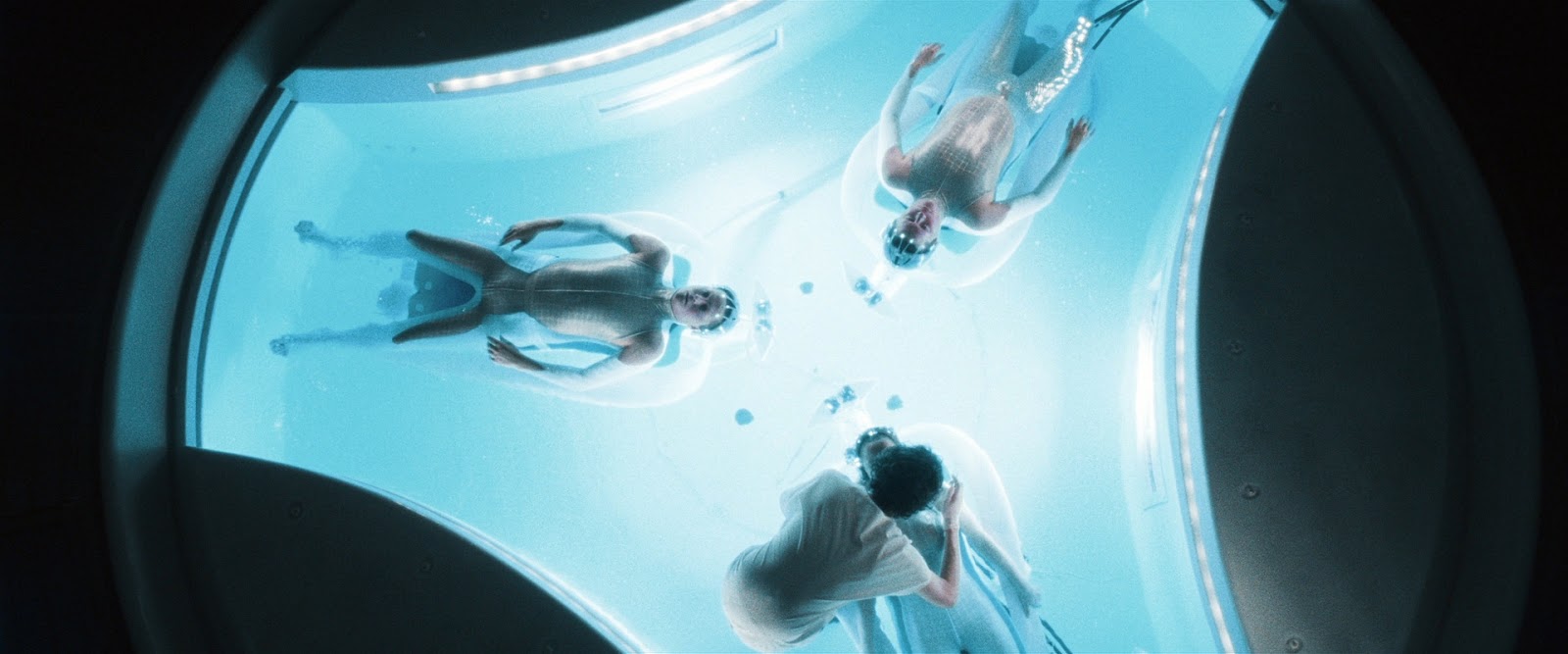
Figure 24. This still image shows the Precrime device, which uses precogs (humans with the power to see into the future) as tools. Connected to the computer, they translate their vision, and the machine processes the received data. Minority Report (2002); [movie] USA: Steven Spielberg.
It is remarkable that apocalyptic life views are not recent phenomenon. Throughout history, people have occasionally expected the end of the world. For instance, the medieval mind was fixated on the imminence of Judgement Day (Figure 15). Predictions of disaster and catastrophe emerged during the Middle Ages with almost clockwork regularity and were motivated by the cultural traditions of early Christianity and ancient Judaism. From an abstract perspective, infinity might be even scarier than the end. The cycle of life is a part our nature and is defined by birth and death. This reflects another perception of extinction as the next step in our spiritual life.
40/Extinction—›
The Last Battle as well as previous examples exclude the prime cause of the disaster and focus only on the aftermath. This suggests an almost unconscious desire of humanity to reboot its existence at any cost. Regardless of whether it is a natural cataclysm or an anthropogenic accident, the significance is in the chance for a fresh start. This plot is perfectly played in Fight Club (1996) by Chuck Palahniuk, a U.S. novelist who has categorised his own work as ‘transgressional’ fiction. Essentially, the book critiques Western consumerism and masculinity through the story of an underground fight club that slowly grows into a massive ideology. 'We don't have a great war in our generation, or a great depression, but we do, we have a great war of the spirit. We have a great revolution against the culture. The great depression is our lives. We have a spiritual depression’.27 The main character is a simple clerk who is depressed and suffers from serious insomnia. By circumstance, he meets a man named Tyler, and they establish an illegal fight club (Figure 20). Together, they explore new ways of existence and build their own ideology, and Tyler becomes a guide and teacher for the protagonist. However, he does not realise that Tyler is not an individual but is instead a part of his split personality. The main character has a double personality, but he does not have control over the other part. Such turn of events can be interpreted as a metaphor for a society which suppresses its destructive force and declines to take responsibility for it. We create idols, put them on a pedestal and take thrill and delight from their fresh, progressive ideas, while ultimately forgetting to question the real motives behind them.
40/Recurrent collapse—›
It seems that the only condition, under which human are ready to accept plateau stasis is the unending life. We always had this guilty desire to overcome death and enjoy the eternity, however lately this idea got a massive temper. Quiet ironically even Nick Bostrom considers death to be a problem, which humanity has to fight with. He mentions that it might be too big or too familiar for people to see death as a problem, however that’s how exactly he qualifies it.33 Today we are more and more discussing possibilities of eternal life and because the medicine still did offer us any promising solutions, humans started looking for alternatives. From the biological perspective our bodies are not ageless, they are getting sick, damaged and simply old. The modern medicine got very advances in solving many health issues, but there are still natural limits, that we can not overcome. One of the alternative possibilities for survival is “uploading”. Even though it sounds as a complete fiction, it has a theoretical ground to it. 'The physical Church‐Turing thesis claims that every physically computable function can be computed by a Turing machine. This is the basis for brain emulation: if brain activity is regarded as a function that is physically computed by brains, then it should be possible to compute it on a Turing machine.'34
40/Plateau stasis—›
Many post-human expectations are closely connected with technologies. Human were dreaming about incredible machines which can advance our existence long before such technology was even close to exploitation. The sketches of famous Italian artist Leonardo Da Vinci offer a prime example. The artist was well known for his multidirectional creative practice, which included painting, sculpting, mathematics, engineering, architecture, music, anatomy, geology, geography and botany. Among other inventions, he drafted several machines, such as a 'spring-powered car', a 'knight robot', a 'tank', a 'parachute' and a 'helicopter’ (Figure 26). Depending on the point of view, each of these can be considered an ancestor of a modern device or simply a lucky guess. There is no way to prove that those designs influenced the following technological developments or that the artist had any sacral knowledge of future.
40/Post-humanity—›

Figure 15. The Triptych by Hieronymus Bosch depicting a popular medieval subject. The left wing tells the story of Adam and Eve, the right wing shows Hell and the centre panel represents the Last Judgment, when Jesus will decides who goes to Hell and who may enter Heaven. We see the Earth on fire, destroyed and full of strange creatures, which are the messengers of the apocalypse. Bosch, Hieronymus. After 1482. The Last Judgment. [ Painting, grisaille, oil] The Academy of Fine Arts in Vienna, Austria.

Figure 20. A still image from the movie Fight Club in which Edward Norton plays the main hero and Brad Pitt portrays Tyler. In the image, we see the moment at which the two men have just met and have no knowledge of how the story will unfold. Apparently, it is also the first moment at which the main hero experiences a split in his personality; however, the viewer and the protagonist do not know this until the very end of the film. Fight Club (1999); [movie] USA, Germany: David Fincher.
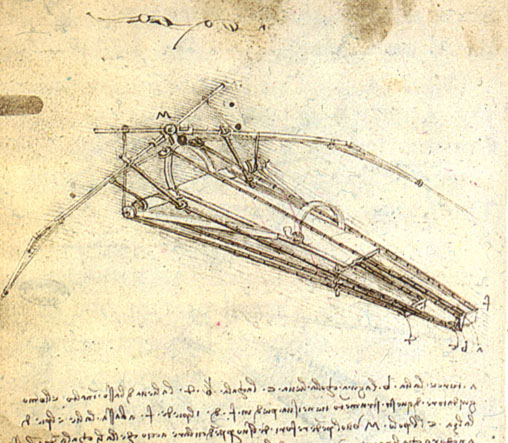

Figure 26. The schematic drawings of machines, made by Leonardo Da Vinci appear rather engineering, than artistic and clearly show that the artist was thinking about construction and its application on the first place and only then about aesthetics. On the left there is a “Design for a Flying Machine” (c. 1488) and on the right the “Siege Machine” (c. 1480).
This idea has also appealed to artists and was explored, for example, in the work Inverted Birth (2014) by U.S. artist Bill Viola, which features extraordinary footage made into an impressive in-scale video installation. The artwork questions the very nature of our existence, including life and death as well as birth and rebirth. It depicts human emotions under extreme pressure mixed with a reversed and slowed-down image of a man having liquid poured over him (Figure 16). It is a stunning visual narrative which invokes a deeper meaning. The artist has explained that '[t]he fluids represent the essence of human life: earth, blood, milk, water, and air, and the life cycle from birth to death, here inverted into a transformation from darkness to light’.25
43/Extinction—›
Fortunately, there are still people who believe that it is possible to make improvements without destroying the existing order of life. There are enough activists, artists, designers and filmmakers who are concerned about the present state of affairs and do not hesitate to share their concerns. For example, Mona Hatoum is an artist with a strong social and political position who speaks out about the conflicts and contradictions of our world. The title of her work Hot Spot (2013) refers to a term for a place of military or civil unrest. She shapes a globe out of a red neon light and depicts the contours of continents to signify that the whole world is a danger zone (Figure 21). She has described it as a ‘world continually caught up in conflict and unrest’.28 This statement emphasises not only the massive character of the disaster but also the unified responsibility for it.
43/Recurrent collapse—›
While the potential of uploading is still doubtful and the process would involve many technical and ethical questions, culture has presented another scenario that is much more romantic and fantastic: vampirism. Vampire stories have recently inundated the market, almost to the point of signaling bad taste; hence, the topic truly affects a large audience. Vampirism has traditionally been considered a privilege that is accompanied by loneliness, violence, boredom and death. Vampires are literally walking dead bodies that exist due to some sort of magic.
They are stuck forever in their current state without ageing, change or development. This struggle is apparent in the movie Interview with the Vampire: The Vampire Chronicles (1994), in which a young Kirsten Dunst portrays a child who has turned into a vampire. She is thoughtlessly rendered immortal by one of the protagonists, and while her mind and consciousness age and develop, her body remains the same. She suffers from loneliness and a deficiency of perspective; she is destined to grow into a woman in the body of a child (Figure 25). This glorious movie manages to combine the romance, drama, beauty and violence of such an existence. The true paradoxical is that recent stories about vampires tend to ignore those inner conflicts and represent a 'vampire lifestyle' in a highly attractive light. This may be related to a human desire for more power or less responsibility, as a person who is already dead does not have much to worry about. Regardless, such stories definitely do not reflect the idea of a stasis and are therefore of no interest to us.
43/Plateau stasis—›
Postcards from 1900 France depicting an artistic vision of the future year 2000 offer a second example. They are part of a series of memorable futuristic illustrations by Jean-Marc Côté and other artists that was issued in France in 1899, 1900, 1901 and 1910. The most special aspect of the images is that despite being completely fictitious, they depict certain aspects exactly right. For example, there is an illustration of the automatic cleaning device ‘Electric Scrubbing', an entire orchestra controlled by one man in 'A Well-Trained Orchestra' or an image of machine which turns books into audio that is called 'At School' (Figure 27). The artists’ guesses are not precise, but they capture the general mood and direction of the progress. Isaac Asimov later published the illustrations in his 1986 book entitled Futuredays: A Nineteenth Century Vision of the Year 2000, which made them available for a wide audience.
43/Post-humanity—›

Figure 16. Still images from the movie depict a man having liquid poured over him in reverse order. Viola, Bill (2014); Inverted Birth [ Video/sound installation 8:22 minutes] Private collection.
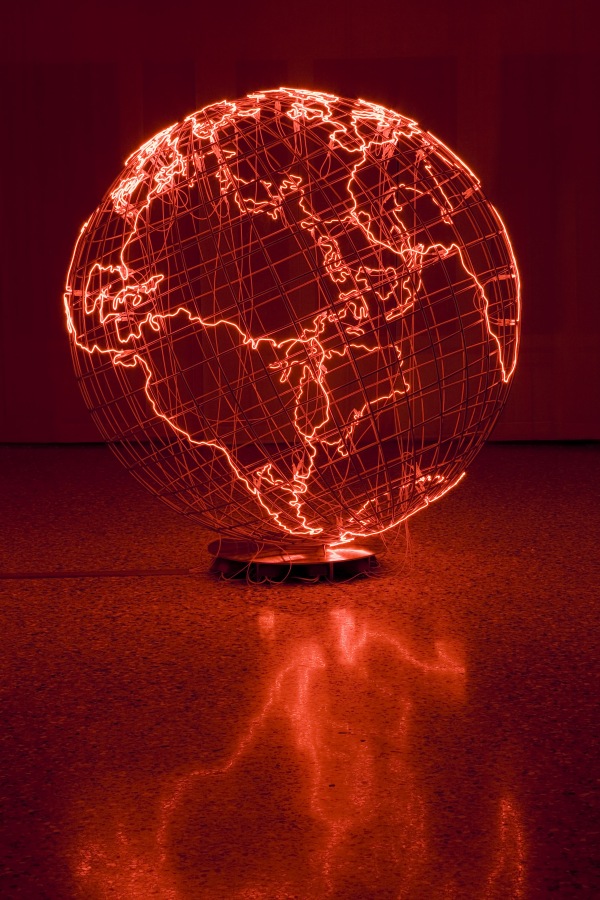
Figure 21. Hatoum, Mona. 2013. Hot Spot [Light installation] London: Tate.

Figure 25. This still image depicts the moment at which the character of Kirsten Dunst cuts her hair in attempt to change at least on element of her appearance, but this is hopeless. The next moment, her hair grows back. Interview with the Vampire: The Vampire Chronicles (1994); [movie] USA: Neil Jordan.

Figure 27. Illustrations created in France by Jean-Marc Côté and his contemporaries to celebrate the turn of the century that show scenes depicting the future of air travel, helicopters, undersea colonies, agriculture and radio. Côté, Jean-Marc; Asimov, Isaac. 1986. Futuredays: A Nineteenth Century Vision of the Year 2000. New York: Henry Holt & Co.
In contrast, Andrew McWillians, a New York-based artist and technologist, has observed environmental issues from a highly personal point of view. In the media installation Emergency Room (2016), he compares the way we react to personal health issues with how we respond to global matters such as climate change. The starting point for the installation was a personal event in the artist’s life: he was diagnosed with type one diabetes, a conical health condition which requires not only constant control but also significant changes in lifestyle and daily behaviour. Struggling with the sudden life changes and facing all ensuing worries, fears and concerns, McWillians realised the similarities with current world experiences regarding global warming. Together with conical disease, there are two ways to handle situation. In the first case, humanity is overwhelmed with worries and anxiety and can continue to ignore the issue. Otherwise, we can seek solutions and begin to make small but consistent improvements. In the first case, the disregard eventually yields dramatic consequences, whereas the second approach can slowly gain control of the situation.29 Believing this to be true, McWillians created a striking installation using 'images of activists attempting to build momentum for change, alongside images of observed effects such as rising sea levels and increasing superstorms’.30 He mixed the stories of individuals dealing with the outcome of climate change with the alarming aesthetics of an emergency room in order to draw attention to every individual rather than a faceless crowd (Figure 22).
47/Recurrent collapse—›
In regard to the fantasies, it is notably difficult to find a serious social or philosophical model of a plateau stasis, especially a positive one. One article that implicitly relates to the topic is 'The End of History?' by Francis Fukuyama, which was written in 1989 under the impression of the collapse of Socialist regimes and was later widely criticised by the public. Fukuyama has argued 'that liberal democracy may constitute the "end point of mankind's ideological evolution" and the "final form of human government," and as such constituted the end of history’.35 Reviews have stated that Francis Fukuyama did not carefully examine the process in detail and had a one-dimensional perspective of the circumstances. In the later book, the author explains 'what I suggested had come to an end was not the occurrence of events, even large and grave events, but History: that is, history understood as a single, coherent, evolutionary process'.36 Yet, his concept did not become popular, and we are presently moving towards the new statement that 'history is back!'.
47/Plateau stasis—›
We already know that the 20th century was focused on the future, and even though many of the ideas and concepts in that time were destined to fail, people also managed to foresee certain courses of events, at least on an abstract level. A case in point is the paper by Velimir Khlebnikov titled 'The Radio of the Future' (1921).39 During that era, radio was a new, advanced medium that the author considered a tool to connect people and represent their universal sympathy for one another. Khlebnikov imagined a radio as a global communication miracle that extends all over the world through every town and village and can reach every human, even in the most distant part of the planet (Figure 28). In Khlebnikov’s plot, the radio becomes a gigantic screen that is placed in social areas and accessible for all members of the community. It broadcasts not only sound but also images in order to convey news, suggestions, lessons and instructions. Such dreams seem naive and even childish, especially taking into account the political and social condition of Russia at that time, but Khlebnikov’s imagination far surpassed his present. Today, his text clearly indicates the initial direction of media development with the expansion of television and the eventual invention of the Internet. Furthermore, his ideas even exceed our current state, as he dreamed of a tool to unite all humans by sharing common information and knowledge of the world. The irony of this piece is that, in addition to the idea of unification and global connection, the author also predicted the domination of the state, totalitarian control, censorship and lack of freedom. In Khlebnikov’s scenario, all the information and knowledge derives from one place, which is called the ‘Supreme Soviet of Sciences’. The belief in a utopia of the past meets the fear of the present in this visionary text.40
47/Post-humanity—›
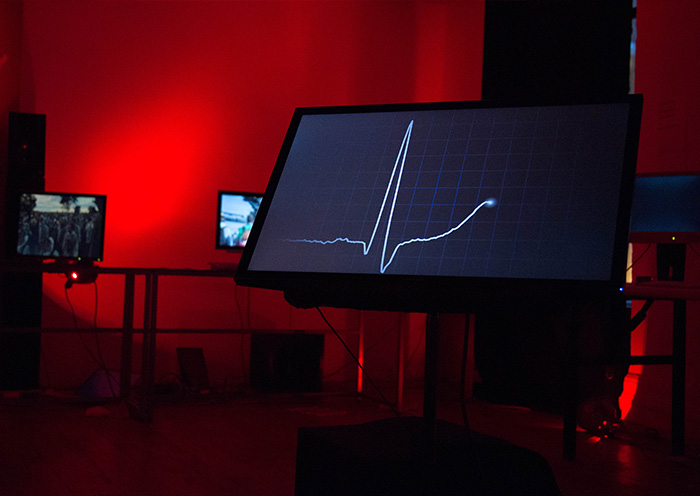
Figure 22. McWillians, Andrew. 2016. Emergency Room. [Mixed media installation] New York: HarvestWorks.
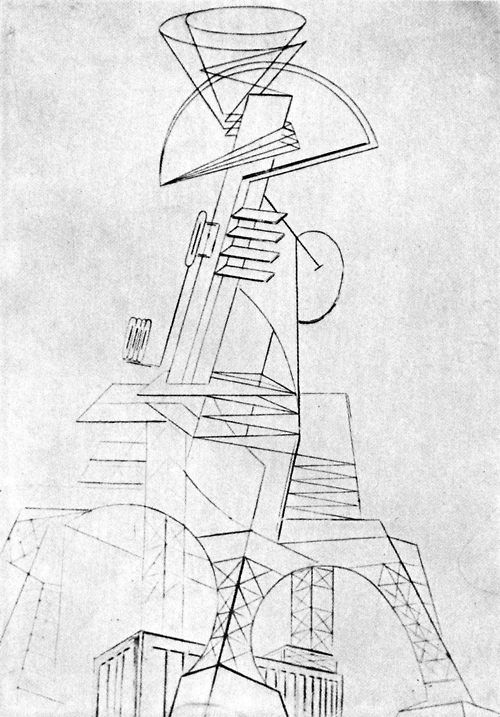
Figure 28. Gabo, Naum. 1919-20. Project for a Radio Station. [Ink on paper]
Another remarkable artist who has built continuous connections between humans and the environment is Seiko Mikami. Mikami is a New York-based artist of Japanese origin who has explored the appearance of the body in space and questioned the role of the human in that context. She has tried to escape the subjective and egocentric perception of the human, seeing him instead as a part of a larger system. The world does not rotate around us; we are part of it and play a role in the global order, sometimes without realising it. Mikami’s work Gravicells - gravity and resistance, made in collaboration with Sota Ichikawa, attempts to represent the human body as an object which causes fluctuations in the gravity field. The work simulates the presence of the viewer in the gravitational force of the Earth and visualises the effect of that presence. Using graphics and audio, the installation reflects on the movement and weight of the body while the visitor walks through it (Figure 23). This creates awareness of the invisible connections that relate us to the environment and encourage us to take it into consideration. They suggest a direction in which people consciously consider themselves part of the global ecology and pay attention to this connection.
49/Recurrent collapse—›
The idea that humans themselves might be a threat to the future is also involved in the post-human scenario. However, society’s concern for the outcome of its actions is definitely a positive sign. In this sense, it is interesting to consider the recent British television series Black Mirror, which offers a critical view of the future. The piece proposes an explicit dystopian perspective of technological developments, but it serves to raise awareness of such a possibility rather than to foretell the inevitable (Figure 29). The creators selected the most troubling aspects of modern culture and over-exaggerated them to their extreme in order to question the borders of our humanity. The series imparts a feeling that there is a highly fragile layer defining humanity that technologies might disrupt. Several stories become almost shocking to the viewer and prompt contemplation of the value of a critical perspective of our culture. We try to analyze and evaluate our actions, but is it uncertain if we can give a clear judgment of the current moment or if we can we live and reflect simultaneously. Automatisation does not render us worse or better people, but it does offer new possibilities, among which is the potential to research ourselves and learn more about the meaning of being a human. Black Mirror episodes convey a hope that we will never find ourselves in such a dystopian reality.
49/Post-humanity—›

Figure 23. This image documents the interactive state of the Gravicells - gravity and resistance installation. In the centre, we see a black figure, the visitor, who learns the effect of his presence in the installation as well as in the world itself. Mikami, Seiko. 2004. Gravicells - gravity and resistance. [Interactive installation, video-mapping projection] Rotterdam: V2_Organization.
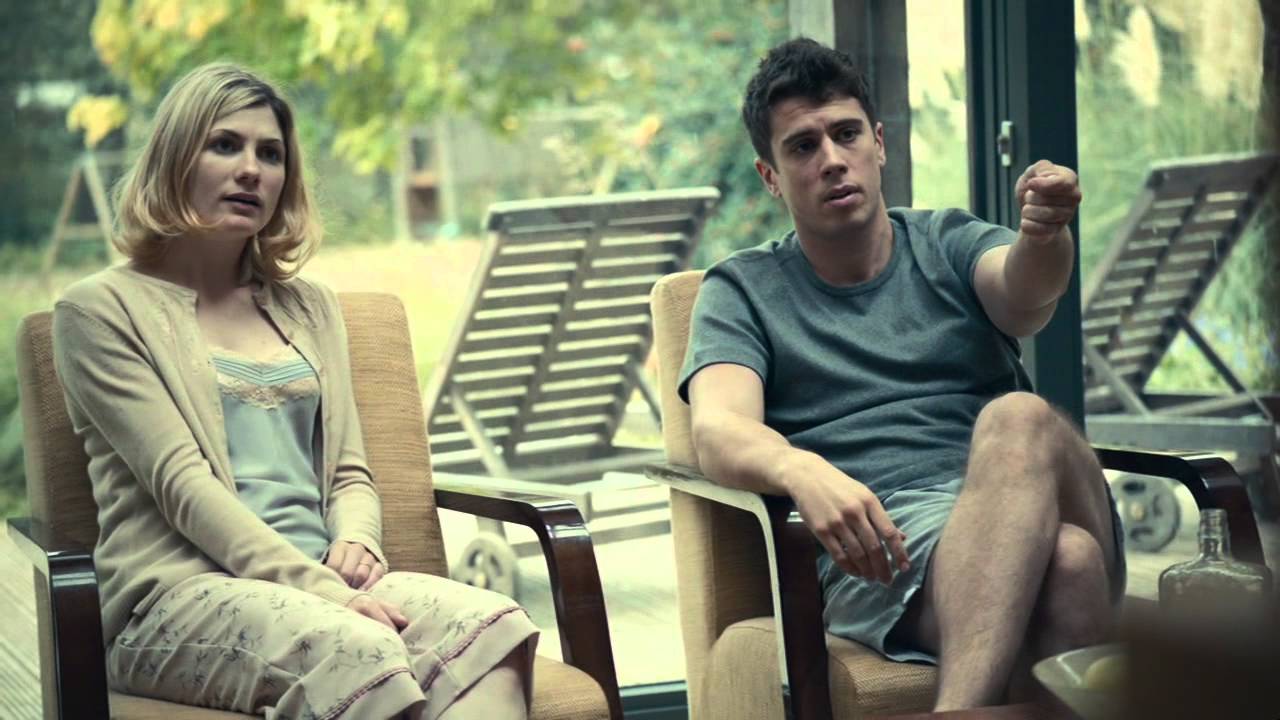
Figure 29. The third episode of the first season of The Entire History of You describes a new technology which records a human’s entire vision throughout the day and can easily play it back. The drama of the episode is built around the jealousy of the main character. He almost touches his wife, going over and over again through her memories. Nevertheless, the scene in the airport where security checks the recordings of last few days feels even more impressive. Black Mirror (since 2011) [TV-series] Great Britain: Owen Harris, Carl Tibbetts, Otto Bathurst and others.
Another essential example that raises yet unanswered questions derives from the famous U.S. media franchise Star Trek, which has become a cult favourite for several decades. In the second season of Star Trek: The Next Generation, there is a remarkable episode called 'The Measure Of A Man'. At the centre of the story is one of the main heroes of the sequence, Data, who is a uniquely self-aware, sapient, sentient and anatomically fully functional android serving as a second officer on the starship Enterprise. Data is the only one of his kind, and the episode revolves around the question of whether he should be disabled in order to research him and discover his nature or if this would be unethical, as the procedure might cause the loss of his memory and experience. Data refuses to participate in the experiment, and the authorities have to decide if he should be forced into it based on the fact that he is a Starfleet property or if, in view of his development, he has reached a level at which he can be considered a sentient being (Figure 30). The discussion leads the characters to conclusion that the android meets two of the three criteria to define sentient life. He is intelligent and self-aware, and the true question is whether human are capable of measuring the consciousness of another entity or if we do not possess sufficient knowledge to do so.
51/Post-humanity—›

Figure 30. This still image from 'The Measure Of A Man' episode depicts the moment of the trial at which it would be decided whether to allow or forbid the disconnection of Lieutenant Commander Data. The First Officer William Riker, against his will, presents the other side and must prove that his friend is simply a machine. Star Trek: The Next Generation (1987-1994); [TV-series] USA: Cliff Bole, Les Landau, Winrich Kolbe and others.
In general it is clear that our society still have to rase and answer many ethical questions about technologies and our future. The possible rise of artificial intelligence gives a lot of food for thought about our consumer approach towards innovations, but also how should we keep up with the progress in order to not get outdated. The short film Soft Materials by Daria Martin is a prime example of a sensual and intuitive proposal of future. It does not exhibit any futuristic attributes or a clear narrative, and we do not see a high-tech laboratory or spaceship in the background. In fact, there is almost no environment or clear surroundings at all; most of the scenes are focused on details, which gives the viewer an almost tactile experience. It is a meditative observation of human-machine communication that occurs at a highly personal, intimate and near-erotic level (Figure 31). ‘The woman in the film touches the surface of a blimp tenderly. She caresses the soft white material, it dents and slowly moves away from her hand, restoring its full, round shape. It drifts upwards, she follows it with her eye, her hand half lifting it, half trying to stay in touch; don’t fly away!’41 In each scene, human actors are naked, which transforms the experience into a natural game. The movie emphasises the difference between the human body and the apparatus body and proposes a different way of interacting between the two. The way in which people treat the machine in Martin’s movie does not relate to utility or usage. She proposes a sensual exploration of a new unknown entity that is pure and honest, if not childlike.
53/Post-humanity—›
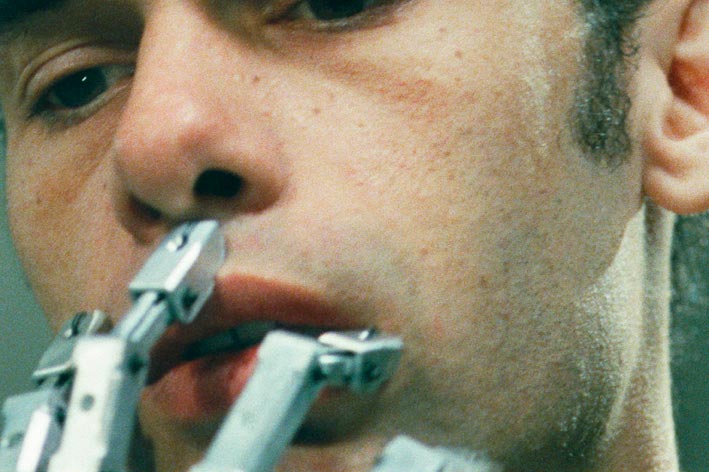
Figure 31. Soft Materials (2004); [Film, 16mm, 10 minutes 30 seconds] London: Daria Martin, Maureen Paley.
course
of actions
In reviewing the series of future predictions, we realise that it offers more uncertainty and confusion than clarification. The problem is not in the prophecies themselves but rather that we do not know how to utilise them. They can be reasonably accurate but are never definite. We have learned how to acquire knowledge and analyse data, but we are still clueless about how to really use it for our advantage.
Jared Diamond, a U.S. ecologist, geographer, anthropologist and writer, has applied the notion of 'creeping normalcy' to describe a phenomenon of a slow invisible change that is hidden within the vanity of daily life.42 Such changes are so imperceptible that their detrimental outcome is almost impossible to grasp and react to. If the same transformation would happen in one sudden moment, the reaction would be immediate, conscious and thus more effective. However, because major global events have been distributed throughout long time periods, there is a chance to ‘cross a line in the sand’, not even being aware of that. A prevalent fear of humanity is that we will not notice the beginning of failure because we are too busy with our daily routine. We are afraid to wake up one morning only to look out the window and wonder how the world has gotten to its present state and where we were while it was happening. This is one reason that we try so hard to predict the future – just to know that we will not make a mistake somewhere along the way.
It is honest to acknowledge that we do not have full control of our future, and there are many factors beyond us that can determine its direction. Moreover, people cannot even reach consensus with regard to how to continue the progress. It is probably beneficial that we are not aware of all events in advance. Knowing precisely every moment of one’s life before experiencing it would lead to deadly boredom. Thus, our main goal should not be to improve prediction techniques but rather to learn how to operate under a condition of uncertainty.
55
Neruda has spoken of a utopia in terms of a horizon. We walk and see the horizon, and we move in that direction. Although the horizon is shifting further and further and we never can reach it, looking at it gives direction to our movement. A utopia is like the horizon43: it is there, but we must open our eyes to see it. The world is constantly changing its structure in extraordinary ways, and it is doing this so rapidly that we have not even developed the vocabulary to describe it. We live in the time of the 'extreme present', when it seems almost impossible to maintain ourselves, and yet it is our task to fight for it. Moses Finley has concluded, 'Utopian ideas and fantasies, like all ideas and fantasies, grow out of society to which they are a response',44 and being aware of that, we have to use it to our advantage.
We learn to observe and analyse and we try to be more transparent and apply a critical approach, but now we must also learn how to take control of the future. The best solution is to create a flexible system that can adapt to unexpected circumstances while maintaining its core direction. In 1973, C. S. Holling wrote a paper entitled 'Resilience and Stability of the Ecological Systems' in which he measured resilience as 'the persistence of systems, their ability to absorb change and disturbance and still maintain the same relationships between populations or state variables'.45 For example, freshwater lakes are reasonably contained systems, at least within their watersheds. The fish exhibit considerable mobility, and the properties of the water buffer the more extreme effects of the climate. According to Holling,
'a highly resilient system is capable
of repeating itself and persisting over
time
until a disturbance restarts the sequence’.46
Today, this idea is applied to the human environment and plays an important role in numerous fields. So-called 'resilient urbanism' has been borrowed from ecology and offers a general strategy for major social, economical and political systems. It does not aim for a bright future, but it does promise functionality and survival under conditions of emergency and uncertainty. Orit Halpern has described the direction as 'a new sentiment of positive affect for negative futures'47 and labelled it a 'resilient hope'.
56
Another way to approach uncertainty is by creating rules. Since the 20th century, designers and artists have widely applied this strategy in their practices, which has resulted in several great manifestoes. Such famous works as 'The Bauhaus Manifesto' by Walter Gropius (1919), 'Topography of Typography' by El Lissitzky (1923), 'First Things First' by Ken Garland and co-designers (1964) and 'Incomplete Manifesto for Growth' by Bruce Mau (2000) were not only fundamental for their writers but also inspirational for the entire generation of creators, and they triggered significant discourse around the role of the creator in modern society. A recent example is a conditional design manifesto (2008) written by a group of young designers that includes Luna Maurer, Edo Paulus, Jonathan Puckey and Roel Wouters. The manifesto starts with an explanation of their vision of modernity. It states, 'We live in a dynamic, data-driven society that is continually sparking new forms of human interaction and social contexts. Instead of romanticizing the past, we want to adapt our way of working to coincide with these developments, and we want our work to reflect the here and now. We want to embrace the complexity of this landscape, deliver insight into it and show both its beauty and its shortcomings’.48 The manifesto itself celebrates the significance of process and offers relatively abstract guidelines that are open to interpretation. However, they become truly clear once one is familiar with the work of the designers (Figure 32).
57

Figure 32. On the left, 'The fall of typography' (28.10.08). Participants: Cornelia, Tobias, Julian. Elements: bookstore, programmer, studio, computer, Internet, client, public space, art school. On the right, 'World machine' (31.10.08). Participants: Roman Bittner, Katja Gretzinger, Henrike Noetzold. Available at: https://conditionaldesign.org/workshops/dynamic-manifestos/.
The previous examples have demonstrated attempts to develop systems and rules that do not necessarily solve the issues but do provide tools and direction to obtain a solution. Humans are constantly seeking new ways to organise themselves more effectively through technologies, institutions and cultural development, and for that purpose, we need to delineate the areas of our control. We wish to learn how to make collective decisions when possible, and otherwise we must navigate through uncertainty while shaping it according to our goals.
In the introduction to the book Who told you so?! The collective story vs. the individual narrative, Freek Lomme writes, 'If we, in an open relation with art’s social texture, face up our own world of experience and allow ambivalence to enter, we will overcome our instinctive fear and we will learn to live in the flow’.49 So far, this statement bears the closest resemblance to the answer to my question. I do believe that the main purpose of the universe is development, and for that reason, mine is as well, as I am a part of this global process. I also believe that narration of the future is a challenge which does not always pay off; however, we must persist and learn from our mistakes. Additionally, we must do this not by trying to 'save the world' but rather by saving ourselves – finding our personal 'flow', knowing our desires and visualising them, accepting the world around us and becoming familiar with its variability, directions, balance and mobility. With enough effort, this image might transfer from our imagination into reality, and it is both a great honour and a great responsibility for an individual in view of how easily even one drop can change the whole stream (Figure 33).
59

Figure 33. These stills illustrate how a solid traffic jam is formed in two movements. https://j.gifs.com/JqlqMg.gif ( linck generated from the gifs.com)
References
1. Faye, Gregory. 2011. An introduction to bifurcation theory. https://www.math.univ-toulouse.fr/~gfaye/ENS11/chap_bif.pdf (Accessed 2017-11-15)
2. Ibid.
3. Markosian, Ned. 2002. Time. https://plato.stanford.edu/entries/time/#TopTim (Accessed 2017-11-05)
4. Le Poidevin, Robin. 2000. The Experience and Perception of Time. https://plato.stanford.edu/entries/time-experience/#2 (Accessed 2017-11-05)
5. Bostrom, Nick. 2009. Future of Humanity. Institute Faculty of Philosophy & James Martin 21st Century School Oxford University. https://nickbostrom.com/papers/future.html (Accessed 2017-11-24)
6. Kuznetsov, Yuri. 1998. Elements of Applied Bifurcation Theory, Second Edition. New York: Springer-Verlag.
7. Choi, Taeyoon. 2017. Poetic Computation. http://www.poeticcomputation.info/ (Accessed 2017-10-25)
8. Yates, Frances A. 1991. Giordano Bruno and the Hermetic Tradition. Chicago: University Of Chicago Press.
9. Harari, Yuval Noah. 2017. Homo Deus: A Brief History of Tomorrow. New York: Harper.
10. Berardi, Franco. 2011. After the Future. Chico: AK Press.
11. Berardi, Franco. 2011. After the Future. Chico: AK Press.
12. Berardi, Franco. 2011. After the Future. Chico: AK Press.
13. Berardi, Franco. 2011. After the Future. Chico: AK Press.
14. Cooper, Melinda. 2010. Turbulent Worlds: Financial Markets and Environmental Crisis. Theory, Culture & Society 27, no. 2–3 (2010).
15. Barrett, Jeff & Stanford, Kyle. Prediction. The Philosophy of Science: An Encyclopedia, ed. by Sahotra Sarkar and Jessica Pfeifer, 2006. New York: Routledge.
16. Hale, John R.; de Boer, Jelle Zeilinga; Chanton, Jeffrey P. & Spiller, Henry A. 2003. Questioning the Delphic Oracle. Scientific American, August 2003.
17. Nostradamus, Michel; Cheetham, Erika. 1989. Prophecies of Nostradamus. New York: Berkley.
18. Kyrre-Friis, Jan; Selinger, E., Riis, S. (Eds.). 2009. New Waves in Philosophy of Technology. London: Palgrave Macmillan UK.
19. Bostrom, Nick. 2009. Future of Humanity. Institute Faculty of Philosophy & James Martin 21st Century School Oxford University. https://nickbostrom.com/papers/future.html (Accessed 2017-11-24)
20. Morse, Donald E. 2006. Anatomy of Science Fiction. Newcastle upon Tyne: Cambridge Scholars Publishing.
21. Curtis, Claire P. 2005. Rehabilitating Utopia: Feminist Science Fiction and Finding the Ideal. Contemporary Justice Review. Vol. 8, No. 2, June 2005.
22. van Inwagen, Peter & Sullivan, Meghan. 2007. Metaphysics. https://plato.stanford.edu/entries/metaphysics/ (Accessed 2017-12-05)
23. Bostrom, Nick. 2009. Future of Humanity. Institute Faculty of Philosophy & James Martin 21st Century School Oxford University. https://nickbostrom.com/papers/future.html (Accessed 2017-11-24)
24. Bostrom, Nick. 2009. Future of Humanity. Institute Faculty of Philosophy & James Martin 21st Century School Oxford University. https://nickbostrom.com/papers/future.html (Accessed 2017-11-24)
25. Press-release Fernisering 17:00–21:00 BILL VIOLA. 2017. Copenhagen Contemporary. http://cphco.org/en/event/bill-viola/ (Accessed 2017-12-23)
26. Bisschop, Lieselot & Barrera, Maria. 2015. Waste as environmental crime. Global developments and Latin American particularities. New York: John Jay College (CUNY).
27. Palahniuk, Chuck. 1996. Fight Club. New York: W.W. Norton & Company 2005.
28. Who is Mona Hatoum? http://www.tate.org.uk/art/artists/mona-hatoum-2365/who-is-mona-hatoum (Accessed 2017-12-28)
29. How art & technology predict the future (2017); [Public talk, video] New York: Andrew McWilliams, TEDxVilnius.
30. Emergency Room (2016). Andrew McWillians. https://jahya.net/works/emergency-room/ (Accessed 2017-12-16)
31. Schlenoff, Daniel C. 2013. The Future: A History of Prediction from the Archives of Scientific American. US: Scientific American [online]. Available at: https://www.scientificamerican.com/article/50-100-the-future-history-prediction-from-archives-scientific-american/
32. Dick, Philip K. 1956. The Minority Report. London: Orion Publishing Co, 2009.
33. A philosophical quest for our biggest problems (2005); [public talk, video recording] Nick Bostrom, TEDGlobal.
34. Sandberg, Anders & Bostrom, Nick. (2008). Whole Brain Emulation: A Roadmap. Technical Report #2008‐3.
35. Fukuyama, Francis 1992. The End Of History and the Last Man. New York: Macmillan, p. 12
36. Ibid.
37. Bostrom, Nick. 2009. Future of Humanity. Institute Faculty of Philosophy & James Martin 21st Century School Oxford University. https://nickbostrom.com/papers/future.html (Accessed 2017-11-24)
38. Bostrom, Nick. 2012. The Superintelligent Will: motivation and instrumental rationality in advanced artificial agents. Institute Faculty of Philosophy & James Martin 21st Century School Oxford University. https://nickbostrom.com/superintelligentwill.pdf (Accessed 2017-11-20)
39. Schmidt, Paul. 1985. The King of Time: Selected Writings of the Russian Futurian. Cambridge, Mass.: Harvard University Press.
40. Berardi, Franco. 2011. After the Future. Chico: AK Press.
41. Broeckmann, Andreas. 2016. Machine Art in the Twentieth Century. Cambridge, Mass.:The MIT Press
42. Diamond, Jared. 2005. Collapse: How Societies Choose to Fail or Succeed. New York: Viking Press.
43. Berardi, Franco. 2011. After the Future. Chico: AK Press.
44. Abdelbaky, Ashraf. 2016. A Perfect World or an Oppressive World: A Critical Study of Utopia and Dystopia as Subgenres of Science Fiction. International Journal of English Language, Literature and Humanities, v.4 is. 3, March 2016. http://ijellh.com/wp-content/uploads/2016/03/2.-Ashraf-Abdelbaky-paper-final.pdf (Accessed 2017-12-18)
45. Holling, Crawford Stanley. 1973. Resilience and Stability of the Ecological Systems. Annual Review of Ecology and Systematics, Vol. 4 (1973).
46. Ibid.
47. Halpern, Orit. 2017. Hopeful Resilience. e-flux [online]. Available at: http://www.e-flux.com/architecture/accumulation/96421/hopeful-resilience/ (Accessed 2017-11-20)
48. Maurer. Luna; Paulus, Edo; Puckey, Jonathan & Wouters, Roel. 2008. Conditional Design. A manifesto for artists and designers. https://conditionaldesign.org/manifesto/ (Accessed 2018-01-05)
49. Lomme, Freek. 2013. Who told you so?! The collective story vs. the individual narrative.
Eindhoven: ONOMATOPEE, p. 9.